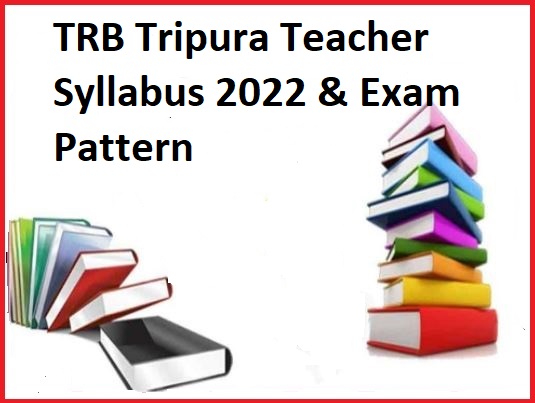| Psychology |
| Subjects |
Topics |
| Basics of Psychology |
- Definition, Development of Psychology (Old Concept to Modern Concept), Characteristics of Psychology as a Basic Science.
- Schools of Psychology: Structural, Functional, Psychodynamic, Behaviouristic, Gestalt and Humanistic Approach.
- Methods of Psychology; Observation, Introspection, Experimental, Questionnaire, Survey, Case Study, Cross-Sectional and Longitudinal.
- Branches of Psychology, Fields, and Scope.
|
| Biological Bases of Behaviour |
- Physiological Psychology – Concept and Importance.
- Cell Structure, Types, and Components.
- Neuron-Structure, Types and Function, Synapses and Synaptic Transmission.
- Nervous System- CNS (With Special Reference to Brain and Spinal Cord), ANS and PNS Their Types and Functions.
- Neural Impulse-Action and Resting Potential, Neural Impulse Cycle, Neurotransmitters Their Role on Behaviour.
- Endocrine System- Structure, Functions, and Abnormalities of Major Glands-Pituitary, Thymus, Adrenals, Pancreas, Pineal, and Gonads.
|
| Sensation, Perception, and Attention |
- Sensory Processes, Attribute and Types (Special, Muscular and Organic), Measurement of SensationWeber-Fechner Law, Signal Detection Theory; Psycho-Physical Methods.
- Perceptual Processes: Determinants; Perception of Form, Space, and Movement; Perceptual Organisation-Concept and Principles; Perceptual Disorganisation-Types and Causes.
- Attention-Nature, Characteristics, and Types; Factors Influencing Attention- Subjective, Objective, and Physiological.
|
| Memory and Thinking |
- Encoding, Storage, Retrieval Processes, Types of Memory, Economic Methods of Memorisation.
- Forgetting-Nature and Causes, Curve of Forgetting.
- Thinking Process-Concept Formation, Cognitive Map, Problem Solving and Reasoning, CreativityNature, Characteristics, Theories, and Measurement.
|
| Emotion, Motivation, and Personality |
- Emotion: Nature and Expressions, Theories of Emotion-James-Lange, Canyon-Bard, McDougall and Activation Theory.
- Motivation: Concept, Biogenic and Sociogenic Motives, Theories of Motivation-Maslow, Weiner, McClelland.
- Personality: Concept and Characteristics, Trait and Type Approaches, Assessment of Personality.
|
| Human Development |
- Scope and Method, Principles of Development, Determinants-Psychogenic, Biogenic, and Sociogenic; Concept of Growth and Maturation.
- Stages of Development- Prenatal and Postnatal (Up-to Adolescence). Adolescence-Needs and Problems, Identity Development, Identity Crisis.
- Domains of Development: Cognitive, Language, Personality, Social and Moral Development. Theories of Development-Freud, Piaget, Erikson, Bandura and Kohlberg.
|
| Educational Psychology |
- Nature Scope and Methods of Educational Psychology.
- Intelligence: Nature Types and Determinants. Theories-Spearman, Guilford, Thorndike, Thurstone, Gardner, and Sternberg. Measurement of Intelligence-Verbal and Non-Verbal Test of Intelligence. Concept of EQ, SQ and IQ. Educational Implication of Intelligence. Aptitude-Relation between Intelligence and Aptitude. Assessment of Aptitude.
- Backwardness (Mental Retardation, Learning Disability) and Giftedness-Identification, Causes and Rehabilitation.
- Learning Processes: Concepts and Factors – Affecting, Theories of Learning-Trial and Error, Classical and Operant Conditioning, Insightful Learning, Transfer of Learning.
|
| Social and Organisational Psychology |
- Social Psychology: Nature, Origin and Development; Social Psychology in Indian Context, Social Influence and Forms (Imitation, Conformity, Compliance, and Obedience); Social Cognition; Social Attitude (Formation, Change, and Measurement).
- Group: Classification, Structure, and Function; Crowd and Mob Behaviour; Prejudice; Stereotype and Discrimination-Origin and Management.
- Leadership: Characteristics, Types, and Functions; Leadership Training.
- Organizational Psychology: Origin, Scope, and Importance.
- Organizational Environment: Physical, Temporal and Psychological-Their Influence on Output; Organisational Climate and its Impact on Work.
- Stress in Wok Place: Causes, Effects, and Management; Concept of Health Psychology.
|
| Abnormal Psychology |
- Historical Perspective, Concept of Normality and Abnormality, Concept of Adjustment, Maladjustment (Causes, Symptoms, and Forms).
- Classification of Mental Disorder with Special Reference to ICD and DSM.
- Mental Disorder: Symptoms, Causes, and Treatment of Anxiety-disorder (GAD, Phobia, and OCD), Conversion, Mood Disorder (Depression- Unipolar and Bipolar, Dysthymia), Schizophrenia, Delusional Disorder.
- Psychotherapy and Counselling: Approaches, Techniques, and Implications.
|
| Psychological Research and Analysis |
- Experimental Research Design- Meaning and Purpose, Concept of Variables, Hypothesis- Concept and Types, Concept of Randomisation and Matching.
- Statistics in Psychology: Basic Statistics, Frequency Distribution, and Its Graphical Representation, Measures of Central Tendency, Measures of Variability, Normal Probability Curve- Concept and Characteristics, Deviation From Normal Probability Curve (Skewness and Kurtosis), Application of Normal Probability Curve.
- Correlation- Concept, and Types; Inferential Statistics- Concept of t-Test, Chi-Square.
- Construction and Standardisation of Psychological Test; Concept of Item Analysis; Detail Study of Reliability and Validity; Establishment of Norm
|


